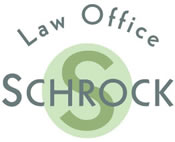In Oregon, a every motor vehicle bodily injury liability policy must contain uninsured motorist coverage in an amount of at least $25,000. The amount must be the same as the limit for bodily injury liability, unless the insured elects lower limits, but the amount must at least be the minimum required. The coverage is actually an “uninsured/underinsured” coverage. The coverage kicks in under two situations, provided the other requisites of making a claim are met. The first is when the other driver that caused the accident has no insurance. The second is when the driver that caused the accident does not have adequate liability insurance to compensate the claimant for the claimant’s personal injuries. This second situation is the underinsurance situation.
In either case, the liability limit of the negligent driver’s insurance policy is used first. So, hypothetically in just a simple scenario, if your claim was worth $75,000 and the other driver had the minimum $25,000 in liability coverage and you also had $25,000 in uninsured motorist coverage, your insurance would pay $25,000 for the uninsured (actually underinsurance) motorist coverage and the remaining $25,000 would go unpaid (unless it could be collected from the other driver personally or there were other defendants). As I suggested, this is a simplified scenario because there are other complexities of the law that an accident attorney would be examining in order to attempt to increase your net recovery. But, if we change one fact and say that your policy had $100,000 in uninsured motorist coverage, your claim would be fully compensated. As an additional note, the underinsured coverage law changed in Oregon in 2015. The first example above only applies to claimants whose policies are not under the law prior to that change, as prior to that change, your underinsured coverage did not “stack” with the at fault driver’s liability limits, but was only effective to the extent that your coverage exceeded the at fault driver’s limits.
The claimant in an uninsured or underinsured case has significant leverage, although there are various technical aspects of the law that require an attorney’s assistance. But the biggest advantage is that the claimant in Oregon has the ability to commence arbitration to resolve the uninsured motorist insurance claim. The cost of that arbitration is limited by statute for the claimant, while the insurance company has to bear the remainder of the cost of the arbitration itself. That cost can be significant as a panel of three arbitrators is typically used. This is a very good way to litigate many uninsured or underinsured motorist claims, although proceeding with a lawsuit is another option that is available. Brad Schrock is an experienced uninsured motorist coverage attorney and Beaverton injury attorney, and has experience in successfully resolving these claims. The statutory law covering the provisions for uninsured and underinsured bodily injury liability is found in the Oregon Revised Statutes, beginning at ORS 742.500.
As a closing note, there is never any reason to elect to lower limits for the uninsured/underinsured bodily injury liability coverage. As with the liability coverage, the UM/UIM coverage should be maximized to the extent that you can with your budget. It only makes sense. As another recommendation, it is also cheap to raise the personal injury protection (PIP) limit that pays your own reasonable and necessary medical bills in the event of an injury caused by an auto accident involving your vehicle. The foregoing article is general information only regarding uninsured motorist claims, and is not to be interpreted or construed as legal advice.
